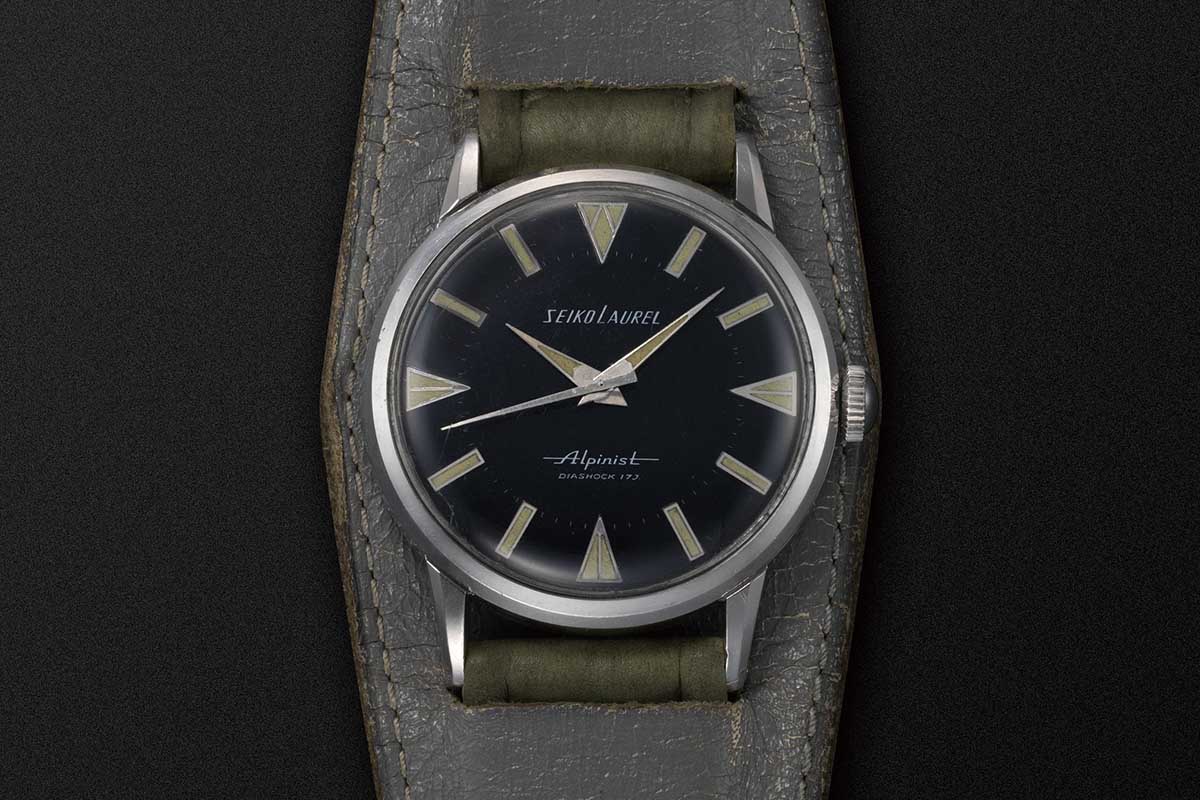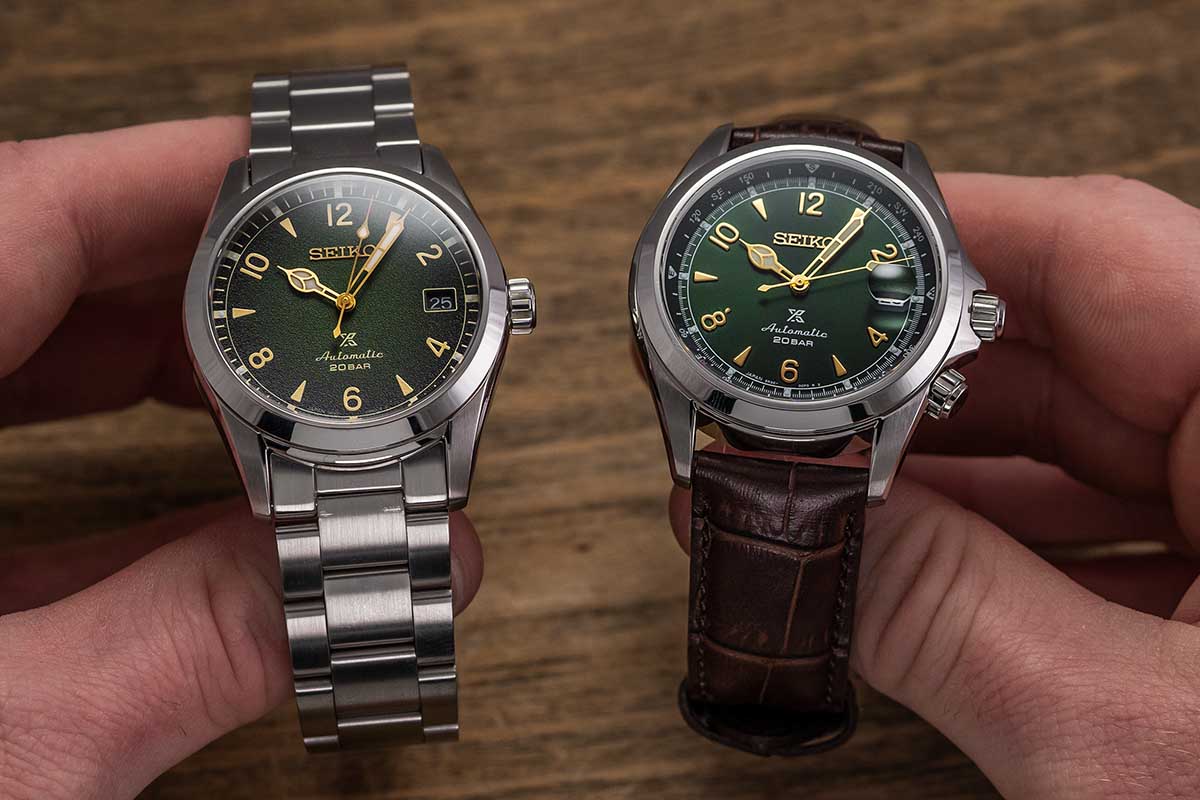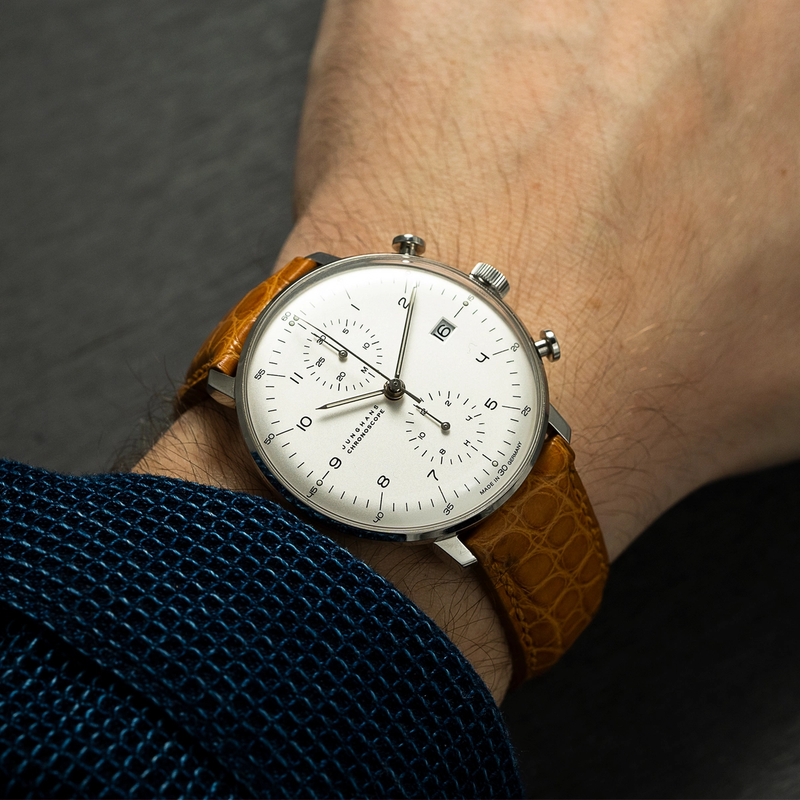
History
First introduced in 1961, the Seiko Alpinist was a significant milestone in the Japanese brand's history It was the first ‘Sports Watch’ for Seiko. Like all great watch designs, it was created with a purpose in mind. The Alpinist was geared up to take on the great outdoors with Japanese mountain climbers. It needed to be rugged and legible. In this story, we will aim to share the full Seiko Alpinist lineup (going back some!). And then finally, although we think you will be sold within the first paragraph or two - why you should consider one! Let’s get into it.

In 1961 we saw the first Alpinist, the Laurel. It is, in collecting circles, the holy grail Alpinist! Produced in black and cream dials, it was categorized by the now iconic arrow markers at 12, 3, 6, and 9. Later in 1963 saw the introduction of the Alpinist Champion 850, this Alpinist reference was instantly recognizable by its bold central lines which extended to the hour markers. A year later in 1964, it was time for the gold variation, the “85899” (interestingly it did not boast the central hour markings like the previous reference). Many, many years later in 1995, we were presented with the Red Alpinist, with the now legendary red writing at 6 o’clock and Arabic numerals at 12, 2, 4, 6, 8, and 10. The early 2000s saw the introduction of the Alpinist 8f56 which used the same inner bezel compass as the 1995 Prospex, and there was even a limited edition of 500 pieces in a blue dial made for SSASS. Fast forward to the 6th Alpinist generation and so-called SARB series introduced in 2006, that gave birth to watches equipped with automatic caliber 6R15: the popular SARB017, alongside models SARB013 and SARB017. All three models have been running on 23 jewels, had 20 bar resistance and gold plated numbers and hands. The main difference among the three of them was that Seiko's SARB013 had the cream dial, SARB015 had the black one and SARB017 Alpinist had the famous green sunburst dial, a favorite among watch collectors. Another difference were cathedral hour hands on SARB013 and SARB017, while SARB015 had the "shark tooth" hour hand and is known by the same nickname.
A year later in 2007, Seiko released the Alpinist Green Ref. SARB017 quickly became a cult favorite of the brand. Its classic design with a sporty element made it an ideal versatile timepiece. Although 2009 brought the introduction of seventh generations having models SARB059, SARB061, and SARB063 (all-black Seiko Alpinist Takeshi Mizukoshi 500 limited model), the SARB017 outlived their fame. Even The Seiko Blue Alpinist SPB089 released in 2019, as U.S. Limited Edition, with a sunburst dark blue dial, produced in 1,959 pieces only, couldn't do much about it, and this one counts as one of the most expensive Alpinist pieces. So let's see what is so special about this Seiko Alpinist green SARB017.
After 57 years, the Seiko Alpinist line was said to be discontinued last year (2018), with Seiko Alpinist SARB017 being pretty much the most popular model.

Last year in 2020 we saw the introduction of the Baby Alpinist - the bezel-less Baby Alpinists (SPB155, SPB157, SPB159). Compared to traditional Alpinists (SARB017, SPB121, SPB119, SPB121) the omission of the internal compass bezel presents a cleaner dial, and the removal of the additional crown at 4 o’clock and crown guards have reduced the case size. The Baby Alpinists come in a fan-favorite 38 mm and with a lug-to-lug of 46 mm. The other notable differences are that the Baby Alpinists have a domed sapphire crystal, the tip on the second hand has a splash of red, the absence of a date cyclops, a gradient dial design, and the numerals/indices are printed. Compared to traditional Alpinists (SARB017, SPB121, SPB119, SPB121) the omission of the internal compass bezel presents a cleaner dial, and the removal of the additional crown at 4 o’clock and crown guards have reduced the case size.
Seiko is known far and wide for its value proposition. There may not be another brand anywhere in the world that offers such bang for the buck (and obsessive detail orientation). The Alpinist is a fan favorite. Instantly recognizable, it is also just a call to adventure! But which one to get? While the green variant is what most are used to seeing, having been in the market for a decade, the blue US edition is certainly the more collectible. Limited to 1959, individually numbered watches, the matte blue dial, and silver hour markers and hands give the watch a more subdued character as compared to its sunburst green dial predecessor. But let us not sway you! We hope you enjoyed this short but sweet journey back into Seiko history.
Check out my video below where I compare both the SPB121 & SPB155.













Join the Conversation
I’ll take the green one. Everyone wearing a blue watch these days.